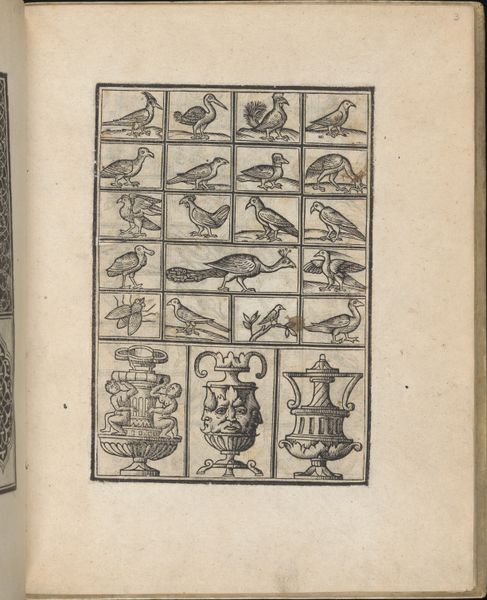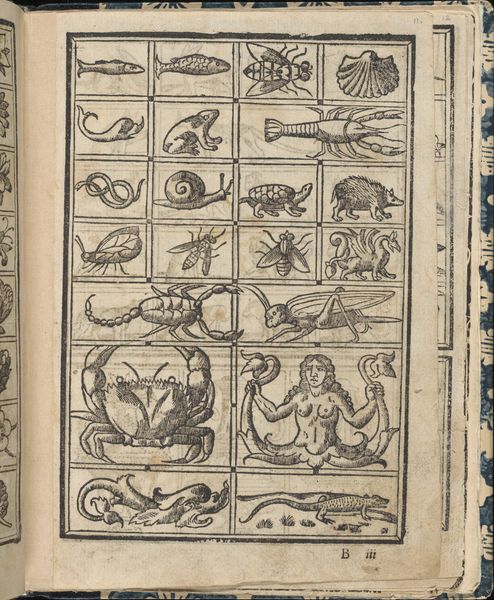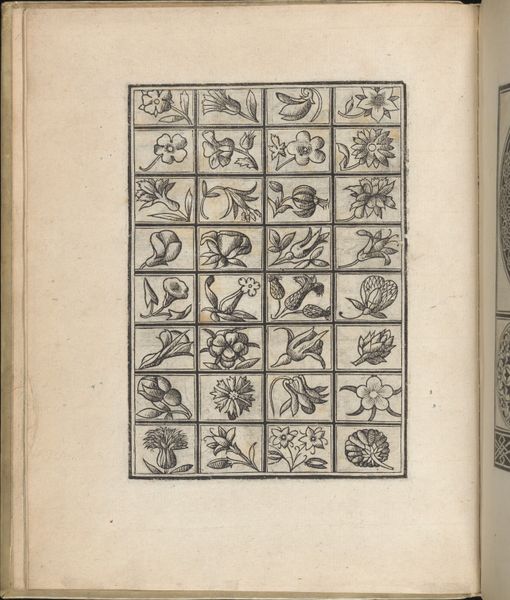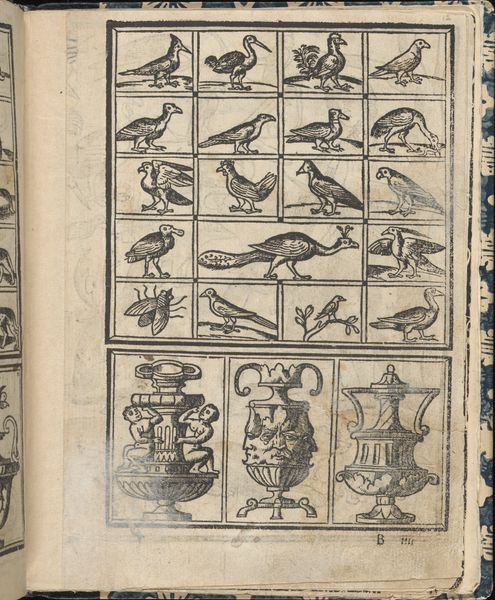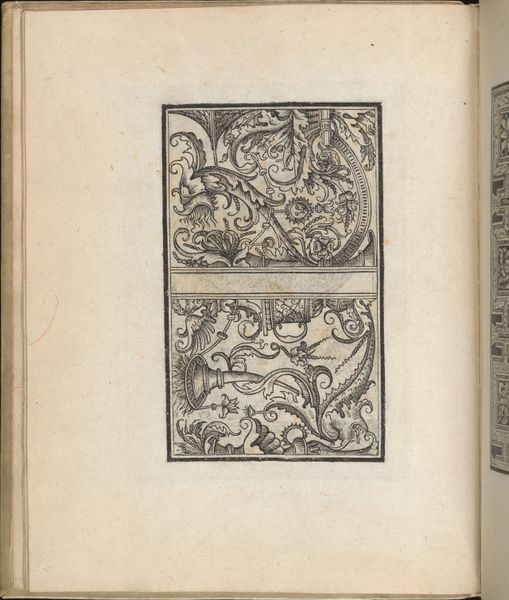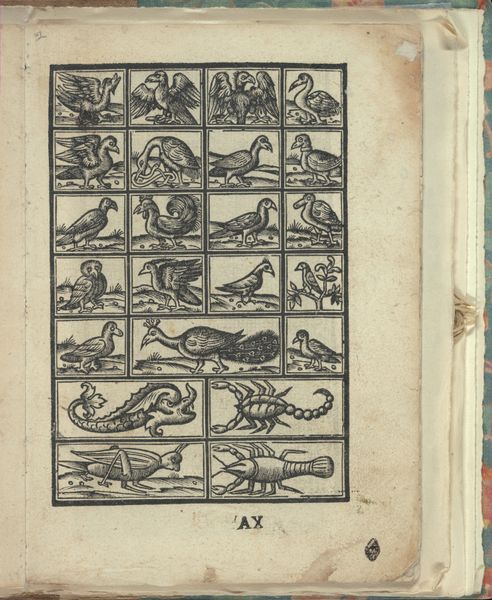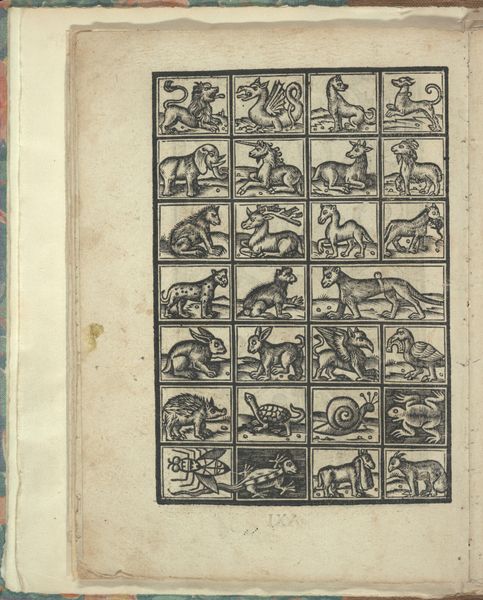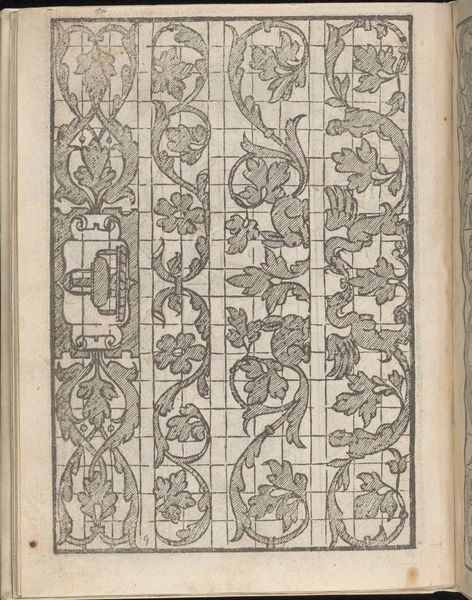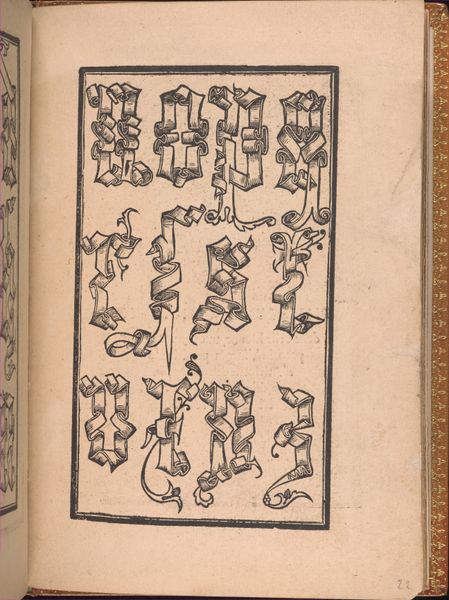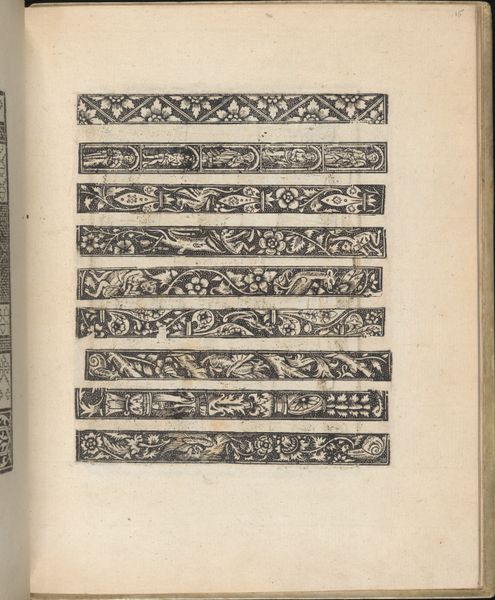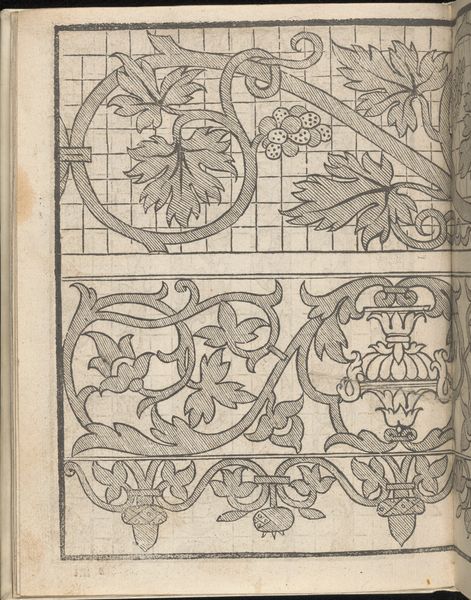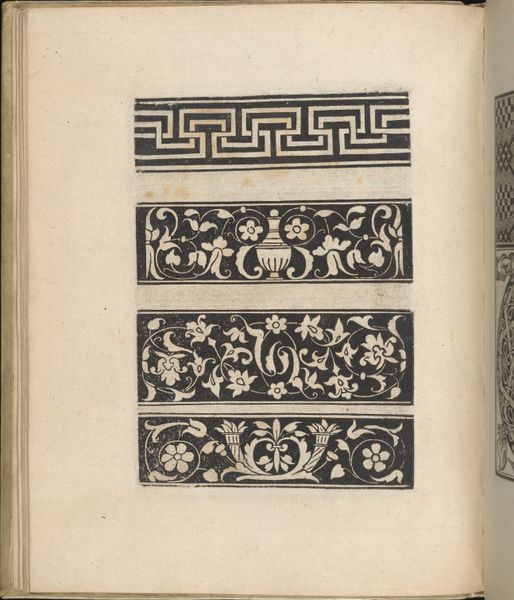
drawing, print, ink, engraving
#
drawing
#
medieval
# print
#
figuration
#
11_renaissance
#
ink
#
engraving
#
miniature
Dimensions: Overall: 9 13/16 x 7 7/8 in. (25 x 20 cm)
Copyright: Public Domain
Curator: This page comes from Matteo Pagano’s "Trionfo Di Virtu. Libro Novo...," printed in 1563. It's a collection of miniature engravings in ink, teeming with various creatures. Editor: My initial impression is that of a carefully cataloged menagerie, like a 16th-century field guide, but with a distinctly fantastical atmosphere due to the gridded presentation. The density is fascinating. Curator: Precisely. These images acted as symbolic representations, not merely illustrations. The crab, for example, might represent tenacity or cunning, and the mermaid signifies temptation or the deceptive allure of the sea. These are visual shorthands that carry centuries of cultural weight. Editor: Looking closely, you can see the lines were all hand-cut into a metal plate. It’s an indirect printing process, yet capable of quite precise imagery. The time invested in crafting each image—especially considering their diminutive scale—suggests a considerable value placed on the work. Was this a commercial piece, or something for a specific patron? Curator: Both. Pagano produced pattern books for artisans and also luxurious editions for wealthy collectors. The imagery draws heavily from established iconographic traditions, echoing bestiaries and emblem books that were popular at the time. It shows the persistence of medieval symbolic systems even within the Renaissance. Editor: The act of printing allowed for distribution on a grander scale. The book’s physical form and the printing method played a critical role in democratizing both classical knowledge and religious thought. This single page exemplifies how such imagery permeated the material culture of the era. Curator: It's interesting to consider that these images served a didactic function but also resonated on a deeply personal level, sparking imagination and shaping perceptions of the natural world and its inherent symbolism. Editor: Thinking about the labor and material resources poured into this small page alters my perception of its monetary and aesthetic worth. I hadn't initially focused on the method of engraving, yet this opens a completely new line of consideration. Curator: Seeing beyond just the superficial depictions of the fauna is essential. Each of the symbols points to how this print would inform a rich and imaginative cultural experience in the Renaissance.
Comments
No comments
Be the first to comment and join the conversation on the ultimate creative platform.
